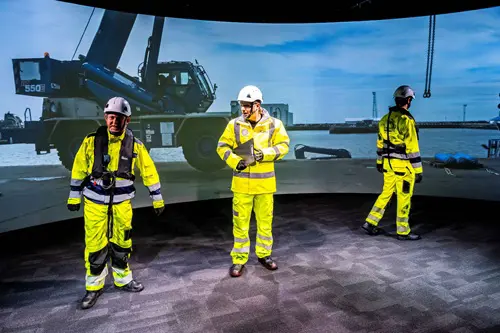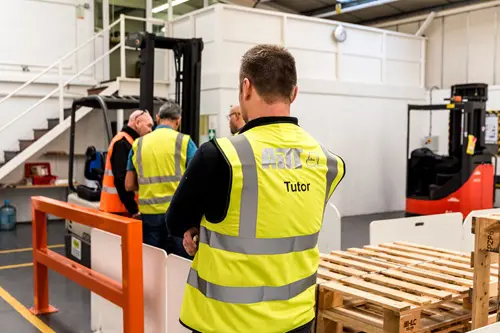A series of road traffic collisions has resulted in police warning drivers to remove their lanyards while driving. If you or your employees wear lanyards when driving, you risk serious injury.
Features
When lanyards can injure: what every employer should know
Employees are often required to wear lanyards that hold keys or passes, both on and off business premises. If an employee is involved in a road crash, their lanyard has the potential to exacerbate the severity of their injuries.
How can lanyards cause injury?
The key or pass attached to the lanyard can injure at high speed causing significant bruising or lacerations. The key or pass can also be compressed into the wearer’s body by an airbag; this has recently been known to result in a victim suffering a punctured lung.
Another victim wearing a lanyard with keys attached suffered a perforated bowel, was in hospital for six weeks and was unable to work for six months. This would otherwise have been a relatively minor incident.
What happens if an employee is injured by a lanyard?
If an employee is involved in a collision while wearing a lanyard, liability for that accident would primary rest with the person that caused the crash, whether that be the employee themselves or another driver.
If another driver were at fault, that driver may allege that the employee, or even the employer, should accept that that they contributed to the severity of the injuries for failing to remove the lanyard and that the compensation should be reduced accordingly. It is unlikely that this argument would succeed due to the remoteness of the injury suffered.
 Staff should remove their lanyards when driving to and from work
Staff should remove their lanyards when driving to and from work
Similarly, if liability for the accident rested with the employee, that employee would have difficulty in establishing that that employer was to blame for their injuries due to the relatively unforeseeable outcome. However, now that awareness of the dangers of lanyards has been raised, employers should do all they can to protect their employees.
How can employers protect their employees?
While injuries caused by wearing lanyards when driving are highly unlikely, it is important to reduce that danger as much as possible. Employers should heed the warning of the police, who have seen firsthand the extent of the damage that lanyards can do.
Employers are encouraged to educate their employees about the hazards posed by lanyards. Most importantly however, they must request that they remove their lanyards when driving to and from work and also while driving as part of their job. This could be done, for example, by speaking to employees directly, by sending a companywide email, by covering it in training sessions, by updating company policy documents and by placing warning stickers in company vehicles.
Once employees have been told to remove their lanyards, employers should take steps to enforce this by monitoring employees as much as is reasonable and by reminding them of the dangers and the company rules.
How can other similar injuries be prevented?
As well as removing lanyards, there are other very simple ways in which danger to employees can be reduced while driving. Carrying pens or hard objects in top pockets can also result in similar types of injury. These objects should also be removed and stored in a safe place when traveling on the roads.
We all know that using mobile phones at the wheel is illegal. These are now often fitted on the windscreen or dash board, as are satellite navigation systems. It should be ensured that these are not positioned in the way of airbags or where they can hurt anyone in the event of a collision.
Employees travelling as passengers should not put their legs on the dash board. Doing so risks substantial injury if the vehicle were to crash. Both feet should be on the floor at all times.
Company vehicles should also be kept tidy and free from items that could become jammed under the driver’s pedals, such as bottles or flasks. These are all simple suggestions, but ones which can easily be overlooked by employees who are otherwise focused on their job or travelling to and from work.
Injuries caused by wearing lanyards when driving are highly unlikely, but they could cause lacerations in case of an accident.
Ben Pepper is associate solicitor, Complex injury department at Bolt Burdon Kemp
FEATURES

Underpinning safety training with neuroscience for long lasting impact
By SSE Active Training Team (ATT) on 30 November 2025
A behavioural safety training programme developed by Active Training Team for energy provider SSE has been carefully designed with neuroscientific principles in mind – resulting in a prestigious industry award for Best Training Initiative in 2024.

Why a painted line will never be enough
By UK Material Handling Association (UKMHA) on 20 November 2025
Businesses that operate material handling equipment like forklifts are being urged to submit accident and near miss details to a new confidential reporting portal so the industry can identify what needs to be done to improve safety standards.

Why workplace transport training is changing in 2026 and what it means for employers
By AITT on 26 November 2025
New workplace transport training categories due in January mean it is essential to ensure operators of material handling equipment have the necessary training for the exact type of machine they use, and accredited training providers are an ideal source of advice and conversion training.



